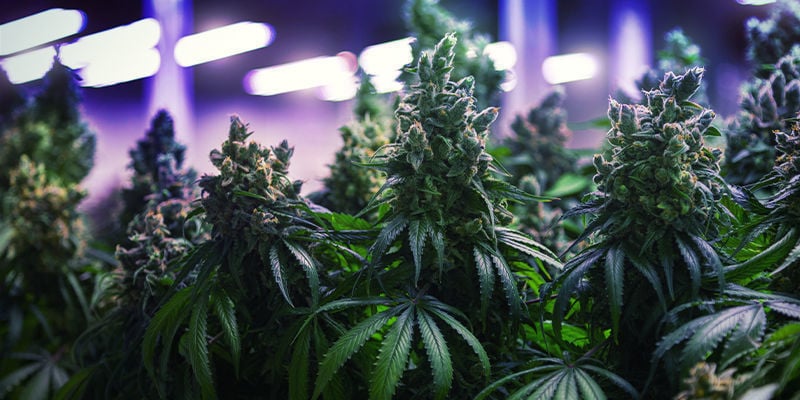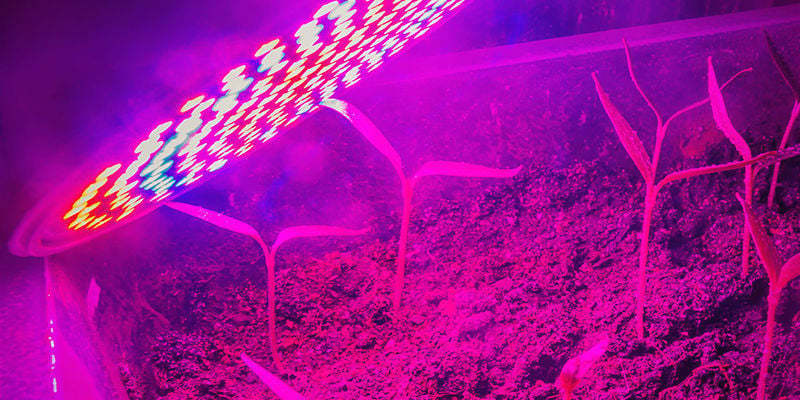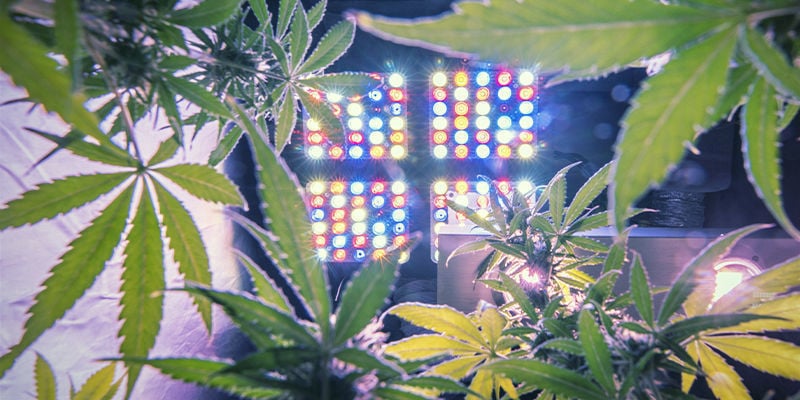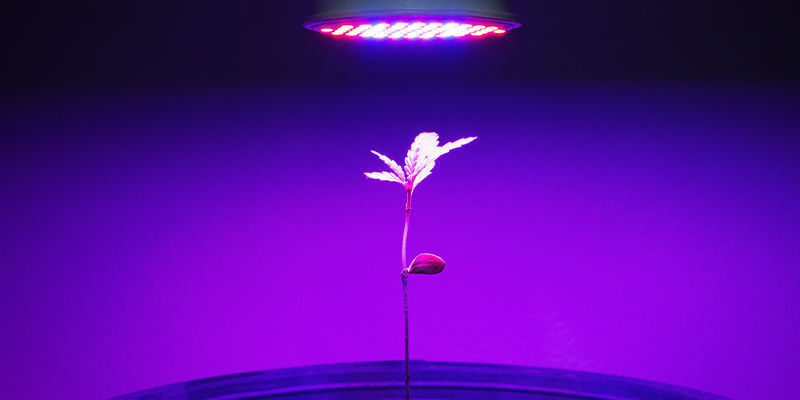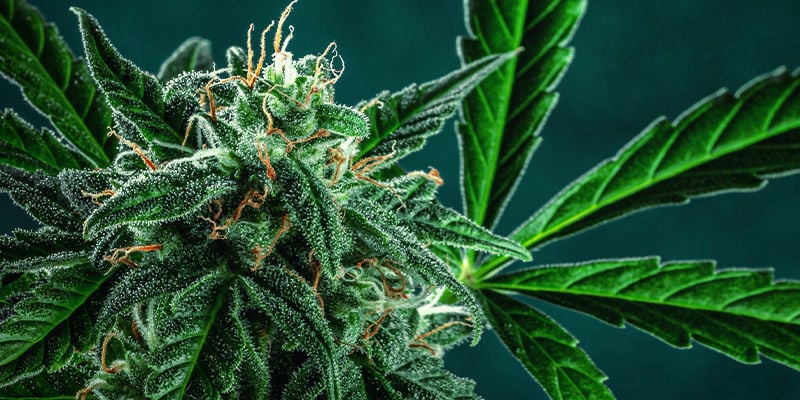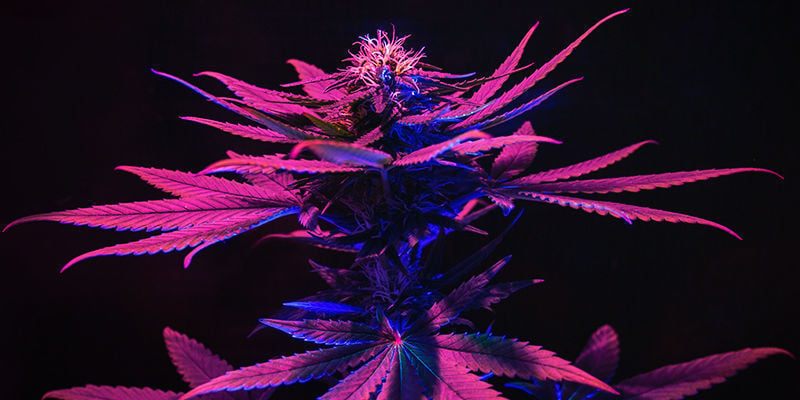Top 7 Lighting Factors For Growing Marijuana
Growing cannabis indoors gives you control over the environment. The need for precise lighting will make or break your harvest, so it also places more responsibility on you. Here are 7 lighting factors to watch out for when cultivating cannabis.
There are many advantages to growing your cannabis indoors. First of all, plants usually thrive best under a very regimented lighting schedule. Control over your lighting source essentially allows you to take whatever approach you want. You can also arrange the plants to make the distribution of light more efficient. Moreover, with an indoor grow-op, you can control heat and humidity; plants are safe from outdoor risks like pests, rain, and theft; and you won’t have to worry about obscuring your plants from view of neighbours or the authorities. Great results are achievable when growing weed indoors.
However, there are many mistakes newcomers make when it comes to indoor lighting. Here are 7 important factors to consider for your lighting setup.
DIFFERENT LIGHT TYPES FOR INDOOR CANNABIS GROWING
Many industries are coming to terms with how standardised lighting has sustained unintended adverse consequences. From the film industry to the science world, sources of lighting were traditionally high-intensity discharge (HID) lights. These heat up very quickly and intensely, even to the point of endangering work environments. Such lights can also endanger your cannabis crop, burning them if a light gets too close. You are trying to achieve precise temperature control of your crop, but the heat from the lights is not helping, and it's ultimately wasted energy. As a result, the cannabis industry in particular is starting to realise that this lack of energy efficiency has an unacceptable environmental impact. There are now more options available for low-heat lighting, like LEDs.
THE POWER NEEDS OF YOUR GROW LIGHTS
Once you have your lights set up, you need to make sure there is a reliable power supply. It has to be suitable for the wattage of your lights. Lights with higher wattage will deliver more powerful output. This, however, can be hard to gauge with precision, since different manufacturers will have different outputs from their lights. As a rough guideline, we could estimate—in terms of light hitting the plant—around 15,000–30,000 lumens per square metre is needed at a minimum during the vegetative phase. During the flowering stage, the rough figure to follow is 30,000–50,000 per square metre.
GROW LIGHT INTENSITY
The intensity of the light itself will increase your yield. This is provided the amount of light available to your plants is optimal. This requires even distribution of the light, as well as an appropriate distance from the plants. The above calculations presumed a distance of 7–10cm from the plant.
It is possible to calculate the distribution of lumens, and therefore, how far they need to travel for best results. The Inverse Square Law states that the intensity of light changes in inverse proportion to the square distance. In other words, the further light travels, the less intense it becomes. Consider that the next time you feel the distant sun's heat on your face. We advise using a few low-wattage bulbs rather than risking too much intensity from a high-wattage bulb. You will have multiple light sources for your plant that can be more easily adjusted for optimal light penetration.
DISTANCE AND POSITION OF LIGHTS WITH RESPECT TO CANNABIS PLANTS
The distance and placing of lights will be especially important to consider when assembling your grow setup. Some growers prefer to arrange plants in tiered rows around a central light source. Others have vertical towers constructed around a central light source. Ideally, lighting from above gives you the best option for exposing light to as much of the plant as possible. You don't want it too close to the plant and risk burning. You also don't want the lights to be so far away that plants don’t reach their full potential.
Finding the sweet spot will depend on calculating the light's intensity. This may require contacting the manufacturer for precise specifications. For example, LEDs can be hard to gauge. As ballpark figures, LED bulbs of 1W should be at least 30cm from the plant; 3W or 5W bulbs should be 45 centimetres away; high-wattage bulbs of 300W or more need 75cm. This is only a rough guideline however. Again, consult the manufacturer with any doubts.
SPACING OF CANNABIS PLANTS
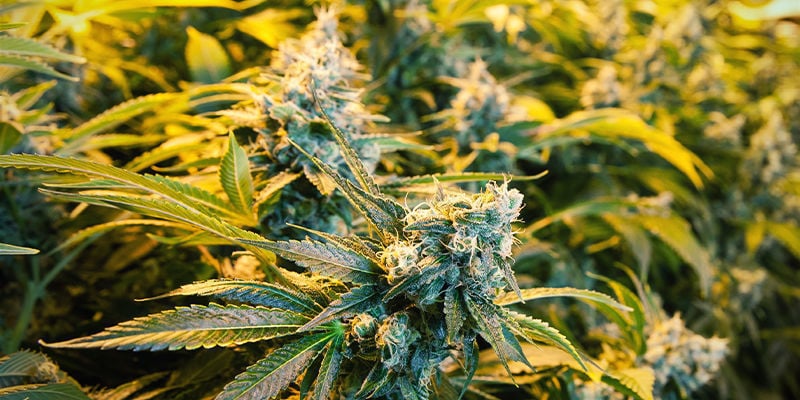
When cultivating multiple plants together, you will need to make efficient use of space. Once again, it’s all about balance. If you pack your cannabis plants too tightly together, you restrict airflow and run the risk of mould and other diseases. Furthermore, the amount of light exposure each plant receives will be cut down significantly due to crowding. Unless growing in a sea of green (SOG) setup, plants should generally not be touching or forced to compete for space. This will culminate in uneven results and fewer banger buds to boot.
If you can, ensure that the light hits the plant from top to bottom, as well as side to side. This way, the entire perimeter of the plant is exposed to adequate light. This allows for a much better chance of achieving optimal light penetration. If your plants continue to grow towards each other and start touching, prune and tie as necessary. Your yield may even be more successful with fewer, larger plants.
HOURS OF LIGHT FOR THE CANNABIS GROW-OP
When your lighting setup is finally in place, now is the time to start learning the key skill of indoor growing. Light cycles involve the hours of light exposure and darkness your plants receive over a 24-hour period. This can be a high maintenance aspect of growing cannabis, requiring a consistent regiment of turning on and off lights at regular times. However, this process can be automated with the right devices and a little overhead.
During the seedling stage, cultivators typically leave lights on for between 16–24 hours a day. Leaving lights on 24/7 is sometimes expensively done, even during the clone stage, although 0–6 hours of darkness is recommended. There is less room for adjustment as the plant starts to grow, with 18 hours of light and 6 of darkness needed for the vegetative state. During the flowering stage, an even 12-12 light cycle is recommended for best results. Do ensure the room is tightly sealed, with no light getting in during darkness. This is the crucial phase of “starving” the plant of light to encourage more robust blooming when the lights are turned back on. Of course, these light cycles only really apply to photoperiod cannabis; autoflowering plants don’t rely on specific light cycles to grow and bloom.
USING THE LIGHT SPECTRUM TO YOUR ADVANTAGE WHEN GROWING CANNABIS
There is one more issue to consider that is often overlooked in lighting. Lights can vary greatly in terms of colour temperature. This means lights can actually project at very specific parts of the light spectrum, of which only a small percentage is visible to the human eye. Within the visible light spectrum, we can recognise that bluer colours have shorter wavelengths, or higher frequency. Colours closer to the red end of the visible light spectrum have longer wavelengths, meaning a lower frequency. Shifts in the frequency of light waves can alter so much about a plant. Scientists have actually experimented with cultivating strawberries and found they can change colour when the colour of their lighting was changed.
If you want vegetative growth to continue to delay natural flowering, then bluer lights will help achieve that. Towards the other end of the spectrum, red lights will encourage floral propagation and sturdier plants. It’s worth adjusting the colour temperature of your lights if it is possible to do so. It may be that extra tweak at delicate stages in the development of your cannabis plant that results in a perfect harvest.
-
 7 min
2 November 2020
How to Save on Energy Costs When Growing Cannabis Indoors
High-intensity lighting, ventilation and air filtering, heating and cooling: Growing cannabis indoors requires a lot of energy. It's not just about the monthly bill for the grower, but the overall...
7 min
2 November 2020
How to Save on Energy Costs When Growing Cannabis Indoors
High-intensity lighting, ventilation and air filtering, heating and cooling: Growing cannabis indoors requires a lot of energy. It's not just about the monthly bill for the grower, but the overall...
-
 6 min
5 March 2020
How To Grow Organic Cannabis At Home
If you want to enjoy highest quality cannabis, then it‘s going to be organic herb. But growing cannabis organically can be a challenge. We explored organic farming techniques and put together a...
6 min
5 March 2020
How To Grow Organic Cannabis At Home
If you want to enjoy highest quality cannabis, then it‘s going to be organic herb. But growing cannabis organically can be a challenge. We explored organic farming techniques and put together a...
-
 5 min
9 December 2019
The best cannabis seeds for indoor cultivation
Growing cannabis indoors is convenient and effective. It allows for a degree of intervention and control that is hard to reach outdoors.
5 min
9 December 2019
The best cannabis seeds for indoor cultivation
Growing cannabis indoors is convenient and effective. It allows for a degree of intervention and control that is hard to reach outdoors.
-
 2 min
10 November 2017
How To Perfectly Light Your Joint
We all have experienced a joint burning unevenly, canoeing on one side. This can be frustrating, especially after you have done your best to roll a perfect-looking fatty. In this article, we...
2 min
10 November 2017
How To Perfectly Light Your Joint
We all have experienced a joint burning unevenly, canoeing on one side. This can be frustrating, especially after you have done your best to roll a perfect-looking fatty. In this article, we...
-
 2 min
30 November 2015
Growing Indoors Vs. Outdoors: The Pros And Cons
There are some significant differences between growing cannabis indoors and outdoors. Knowing them can help you decide which is best for you.
2 min
30 November 2015
Growing Indoors Vs. Outdoors: The Pros And Cons
There are some significant differences between growing cannabis indoors and outdoors. Knowing them can help you decide which is best for you.













 United States
United States


